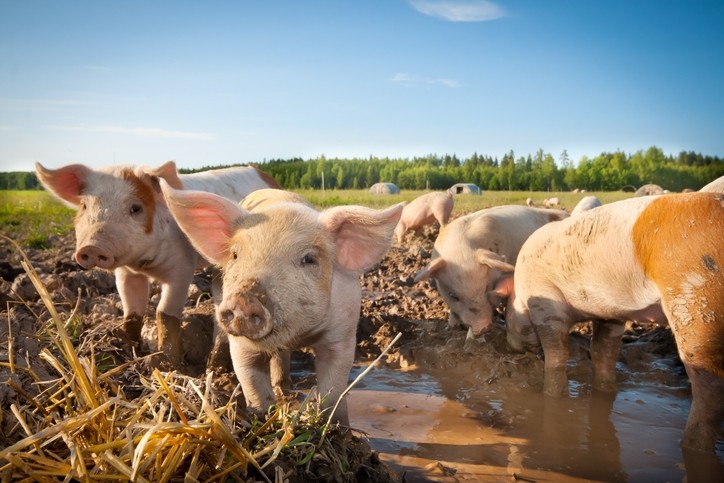US: Rodale Institute launches sites to expand organic feed, livestock research

The US organic research institute, a pioneer in this field, is opening a series of regional resource centers to address challenges and barriers to specific to organic feed, crop and livestock production in different parts of the country, said Andrew Smith, chief scientist with the institute. The sites will support regionally-focused research into improving organic production.
"Organic [agriculture] is 1% of the farm base in the US and 14% or more of the marketplace and growing much faster than the land is transitioning to organic," he said. "I do think that, in three years, we could see significant impact or significant changes in those areas [with new resource centers] and looking 10 or 20 years out, it wouldn’t be incomprehensible to see drastic changes."
The institute was there at the start of the US organic movement and maintains the longest running trial focused on comparing organic and conventional production in North America. The Pennsylvania-based nonprofit looks to support organic production using “solutions-based research,” education and training. It seeks to help farmers transition to organic production along with researching organic farming methods and their effects.
It promotes regenerative organic farming, which involves several facets including no use of synthetic chemicals, improving the use of cover crops and crop rotations, growing crop diversity and minimizing soil disruption through practices like tillage, said Smith. “Right there is where most of the research in organic agriculture has stopped.”
Integration of livestock and feed crops
A new midwestern facility is located in Marion, Iowa and is intended to support further research into feed crop and vegetable production, but will also support work looking at the integration of livestock and feed crops, he said.
Previously, feed crop and livestock production were not as separated as they are now; however, by 1996 only about 10% of farms integrated livestock and crop production, according to institute information. But the practice is regaining attention following work done on ley farming in other countries including New Zealand and Australia. In that setup, multiple years of grain crop growth are followed by several years of grazed grass and legume pasture as a way to restore soil and boost energy output, the institute reported.
In Iowa, the facility is set to focus on organic feed crop production along with the integration of crops and livestock production, said Smith.
Although producers in Iowa, and other parts of the Midwest, raise feed crops like corn and soybeans and produce livestock, the two activities tend to be separated, he said. “The biggest barrier to integrating livestock right now is the infrastructure.”
Organic feed can be one of the largest costs for organic livestock producers, Smith said. However, farms in the Midwest could be large enough to generate the amount of feed needed and, by integrating livestock production with crops, might be able to use animal manure to improve soil fertility.
The region has the potential to allow for research trials where livestock production is paired with a typical corn-soybean crop rotation, he said.
Focusing on regional organic production
In addition to the facility in Iowa, regional resource centers are being planned in Chattahoochee Hills, Georgia and Ventura, California.
“These are research and education centers that would carry the message and conduct research similar to what Rodale does in Pennsylvania but also to reach a broader audience and ... to be specific to a region,” Smith said of the new locations.
Feed grain and agricultural producers tend to be skeptical and when the institute has published or presented research there has been an element of “You can do that in Pennsylvania, or you can do that in a temperate region, but you can’t do that down in the South, or in a tropical region or you can’t do it over here because it’s more arid,” he added.
By having research and demonstration facilities in different regions, it starts to “nibble away” at some of the excuses presented, said Smith. “You show people that it can be done in their area.”
“We recognize that every region of the country and every part of the world, has differences whether it’s weather, whether it’s people or climate or culture,” he said. “We want to meet those people where they are, in their situation and design regenerative organic systems that meet the needs of those farmers.”
Another impetus for the regional expansion is that organic research and education tend to generate organic hotspots, which have been linked to improved regional economics, he said. “By putting some research and education there we think we can create a hotspot over time,” he added.
Once locations are selected for the new regional centers, hiring begins, said Smith. “The first goal is to get the right people in place, which takes several months to half a year, and then the next goal is to gather all the information about the area and the region and bring all the players together,” he added.
At the new facility in Iowa, a research scientist has already been brought on board, who then takes over the process of finding additional employees for the location and starting to address the scientific work that will be done, he said.
“It’s close to a year by the time we announce it until we actually have something tangible to see, and close to two to three years … before we’d have any tangible results from research projects – but it doesn’t mean that, after year two, we couldn’t start to have demonstrations or educational events centered around the farm,” Smith said. “In agricultural field science, one year of results is generally not considered enough, because one year is a good year, the next is dry, the next it rains too much – three years is a minimum to be able to have good results and planning.”












